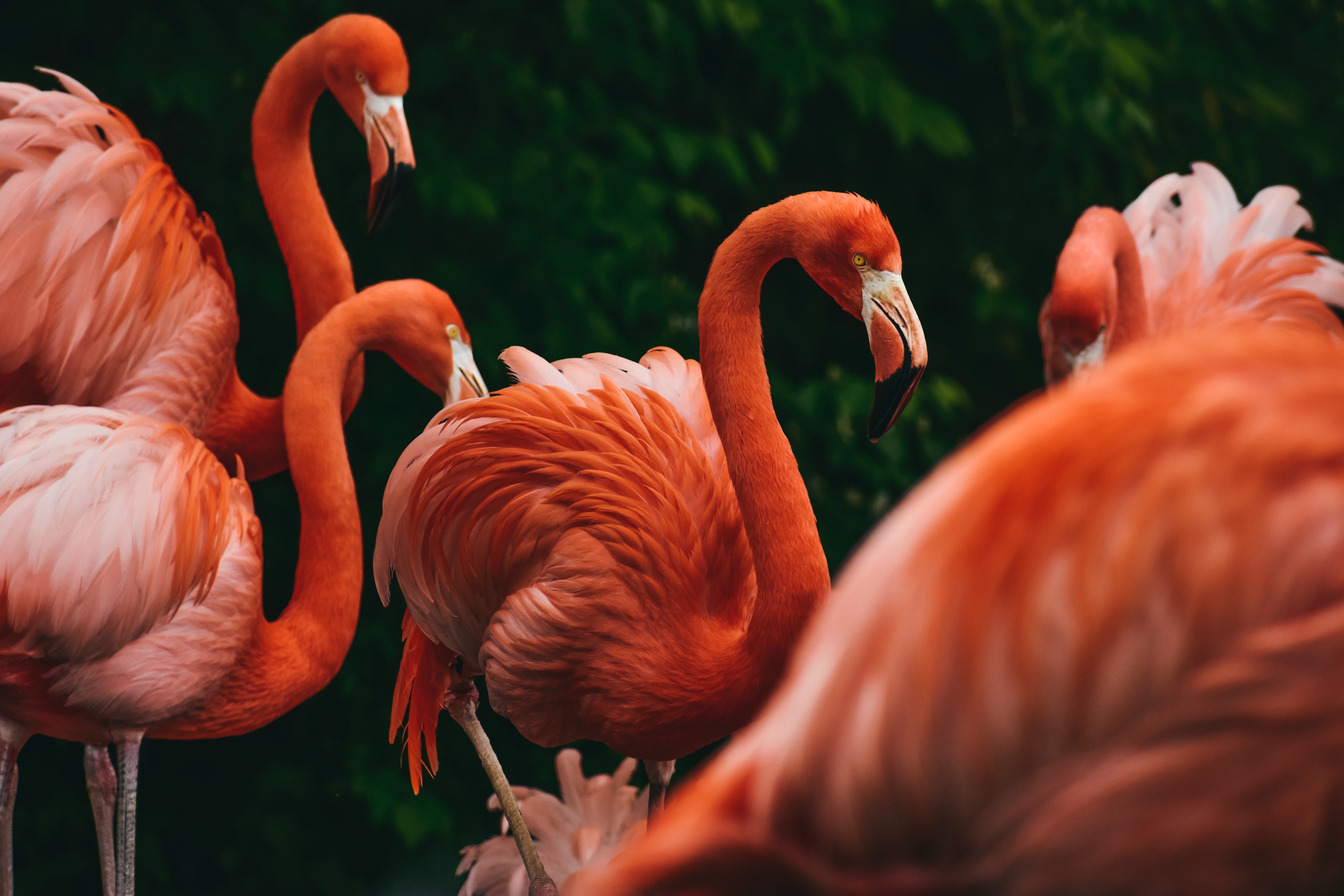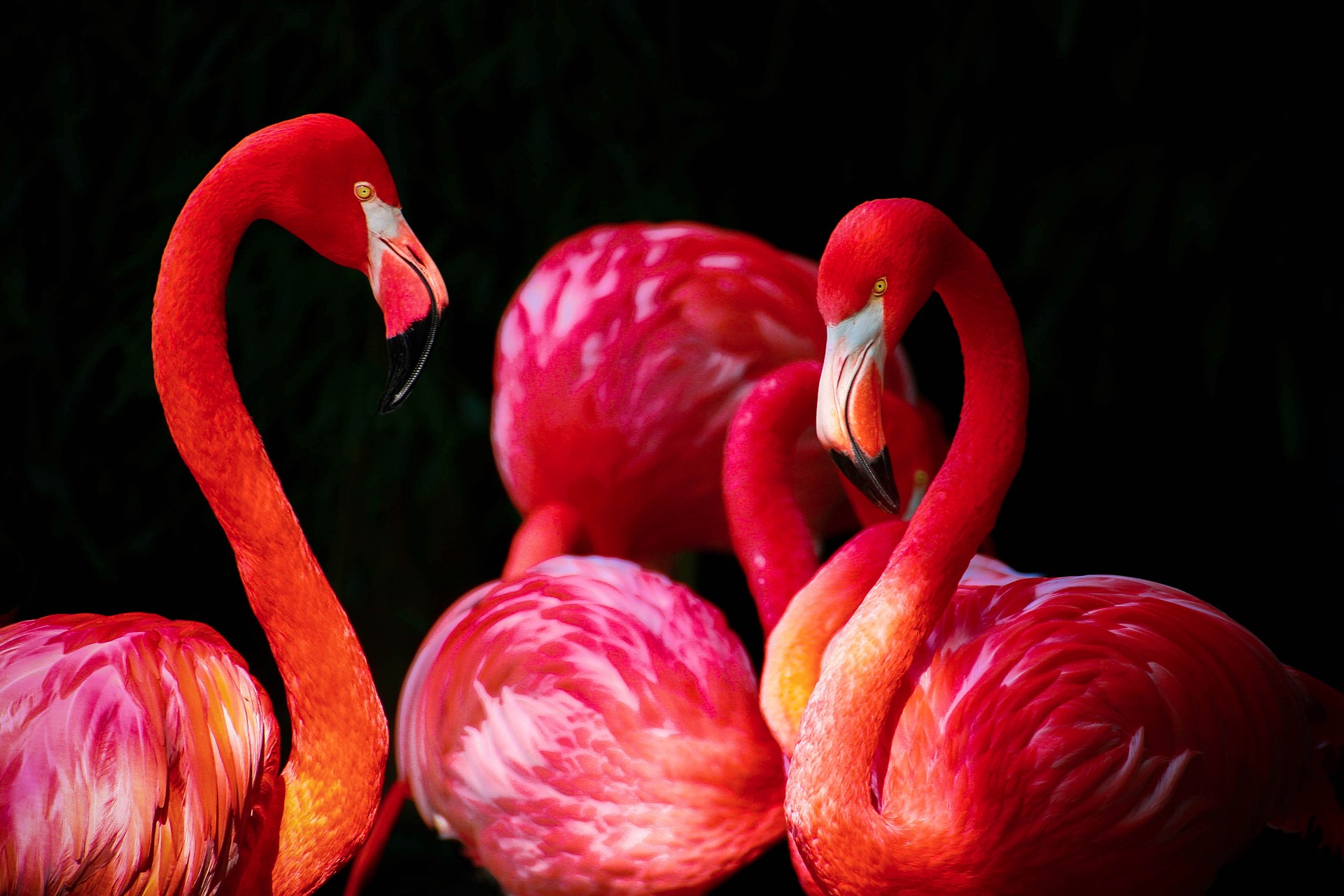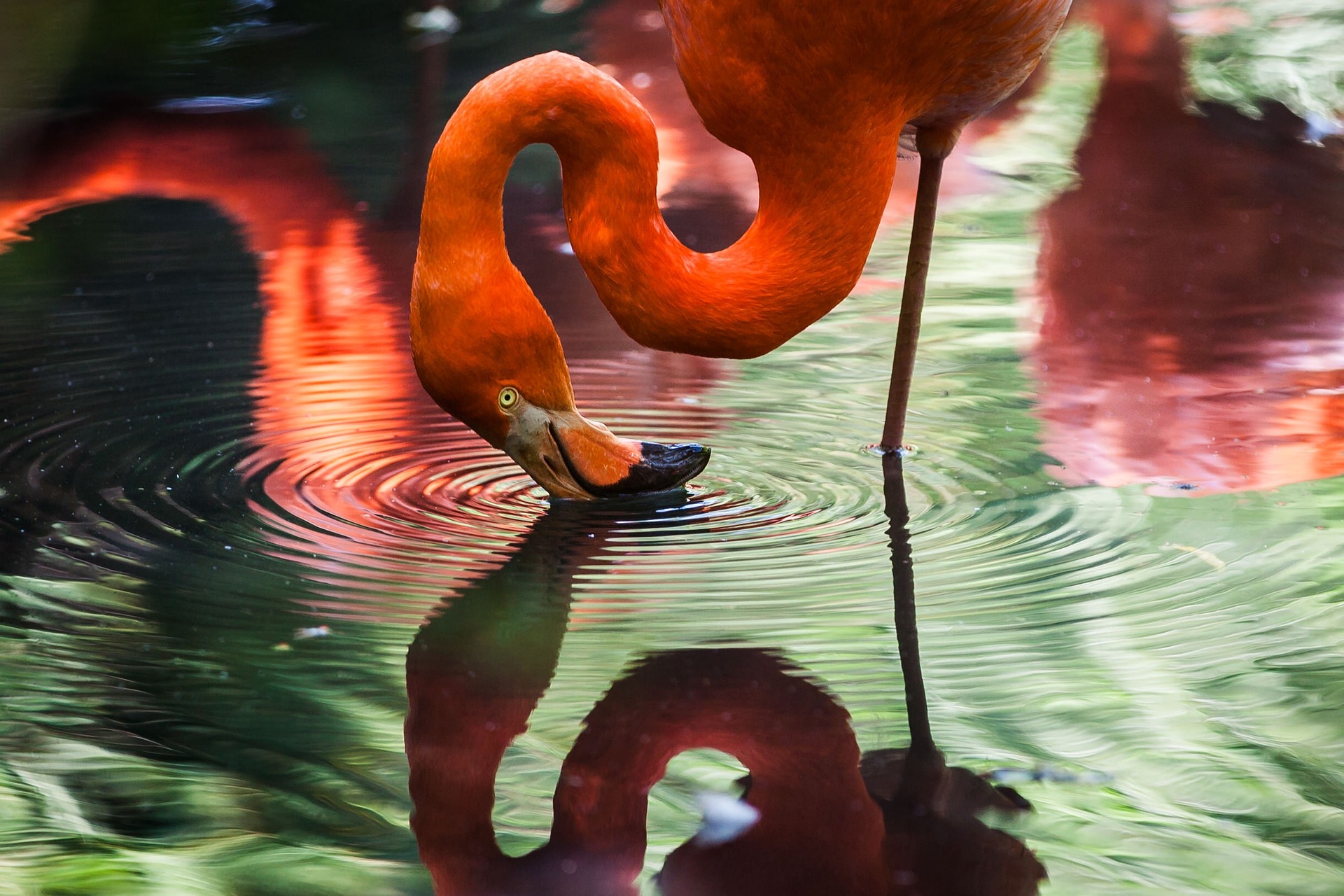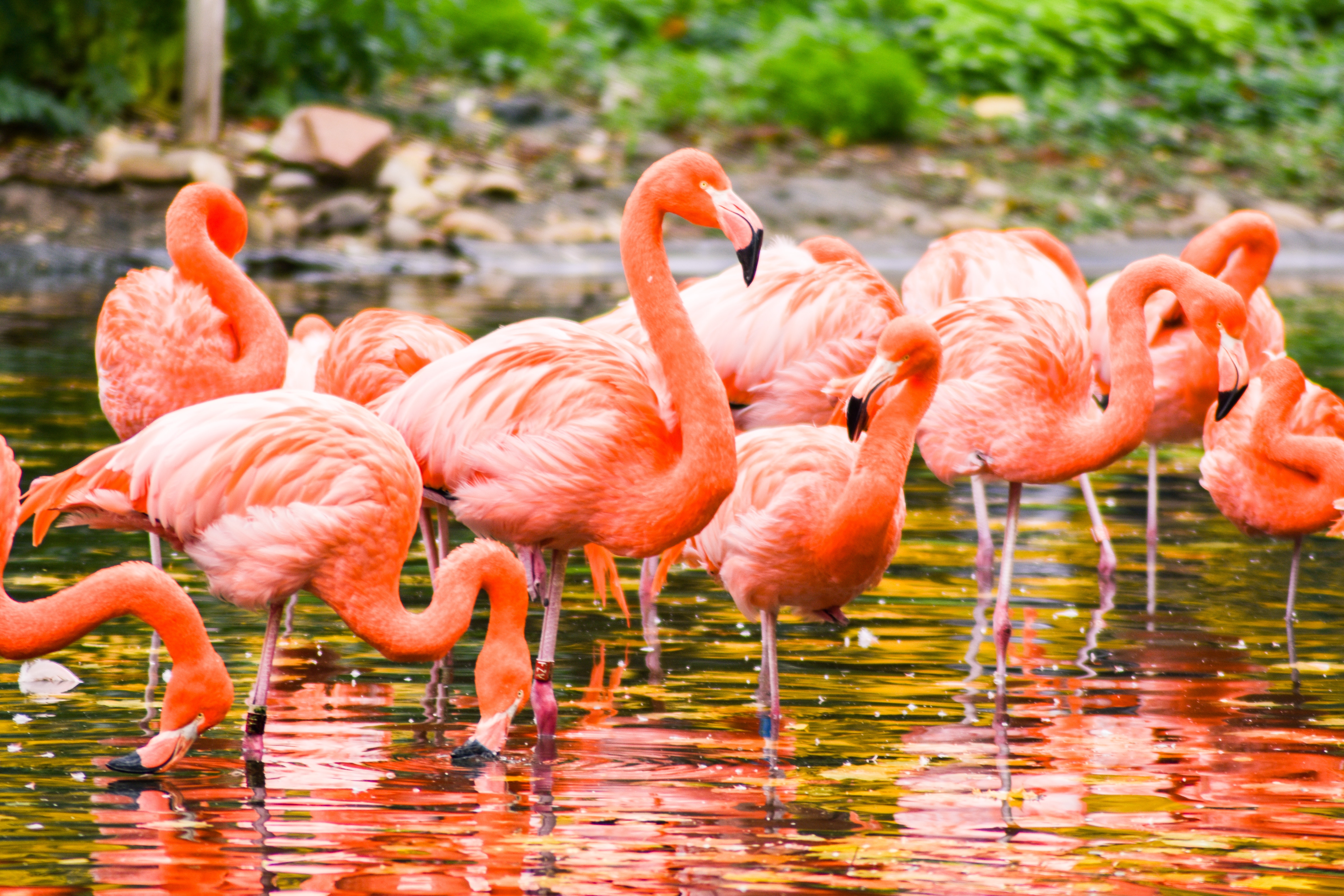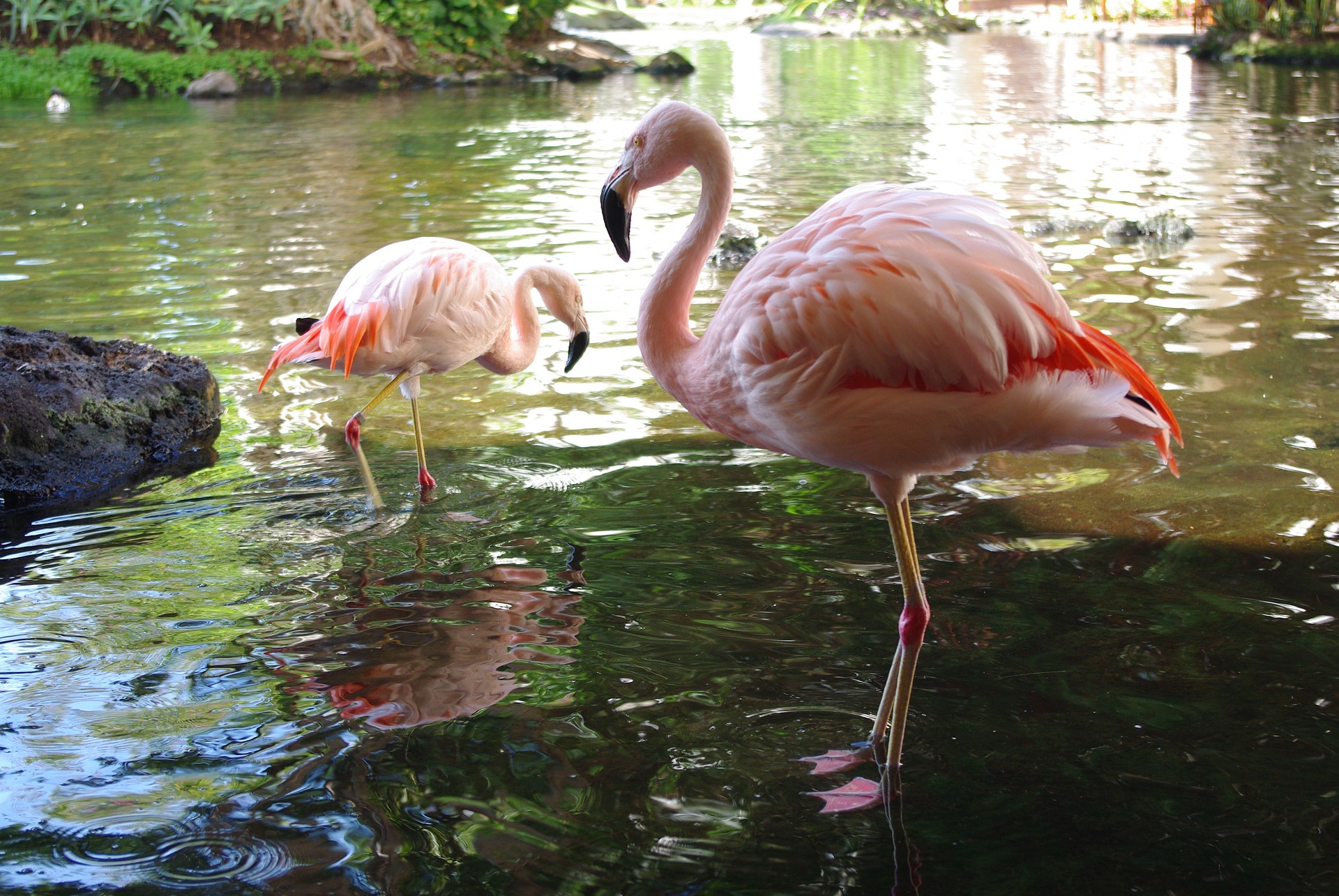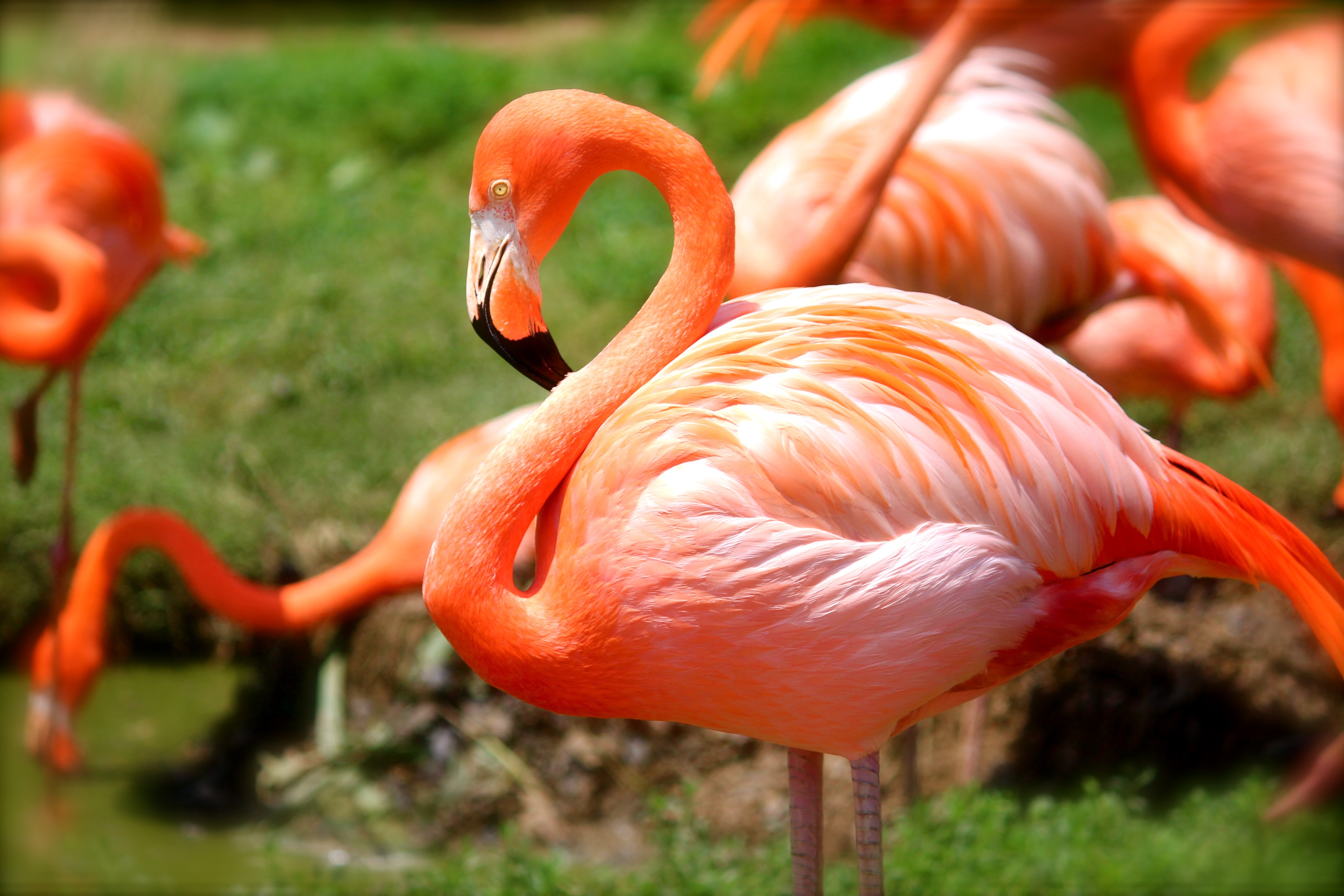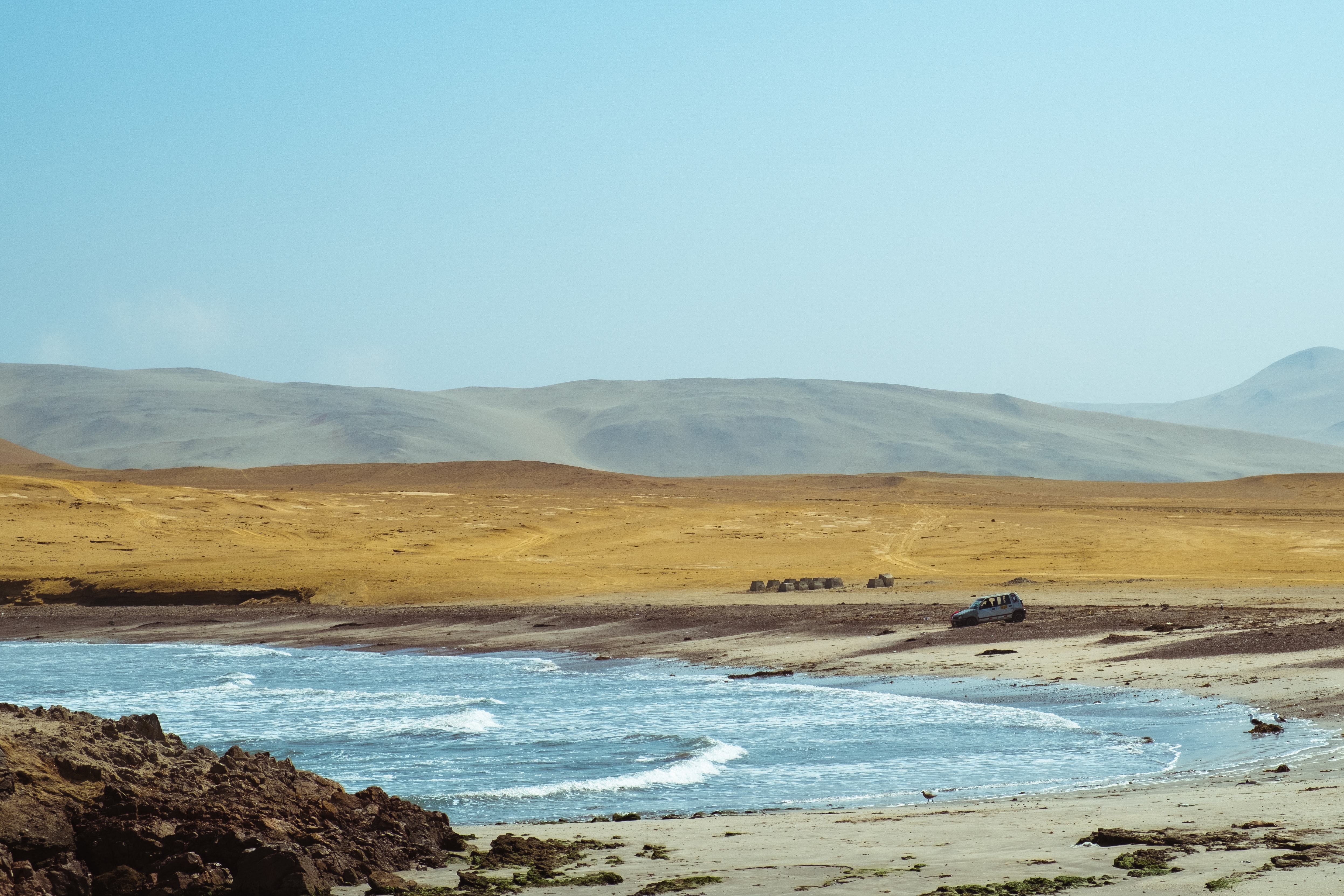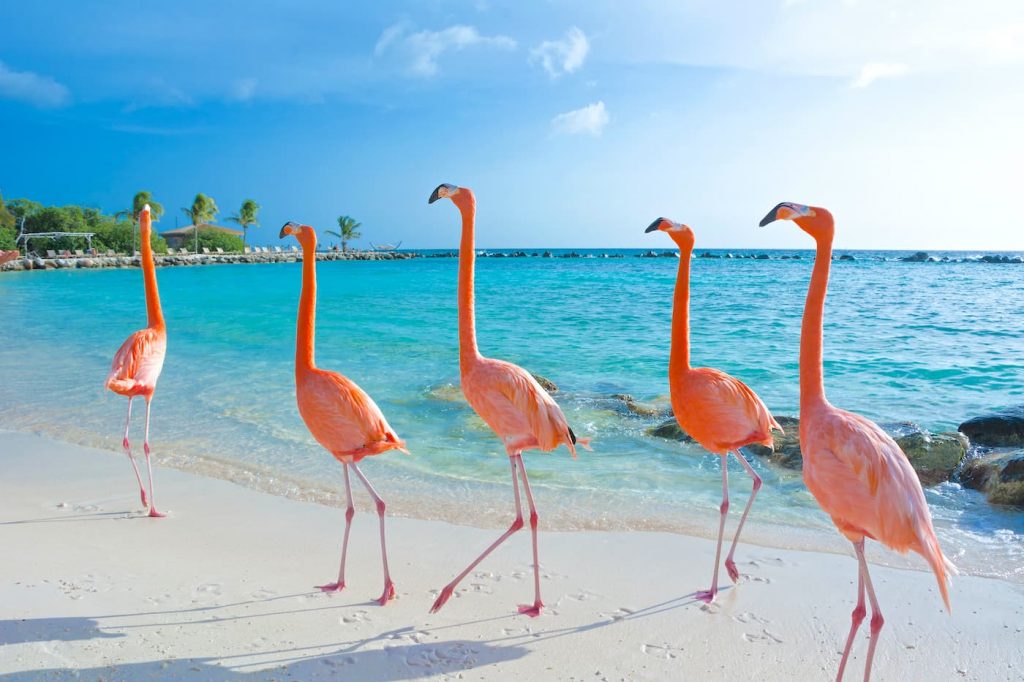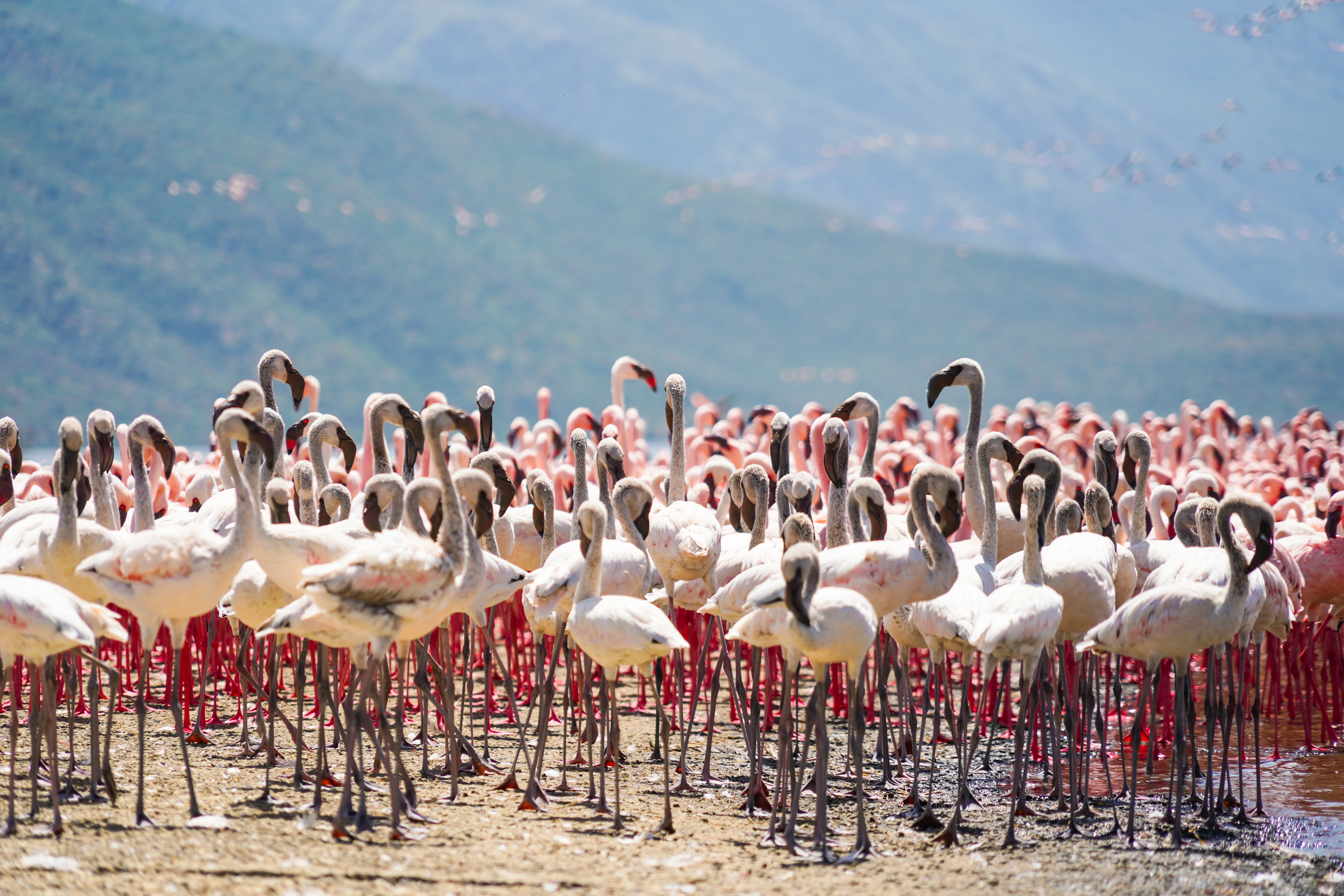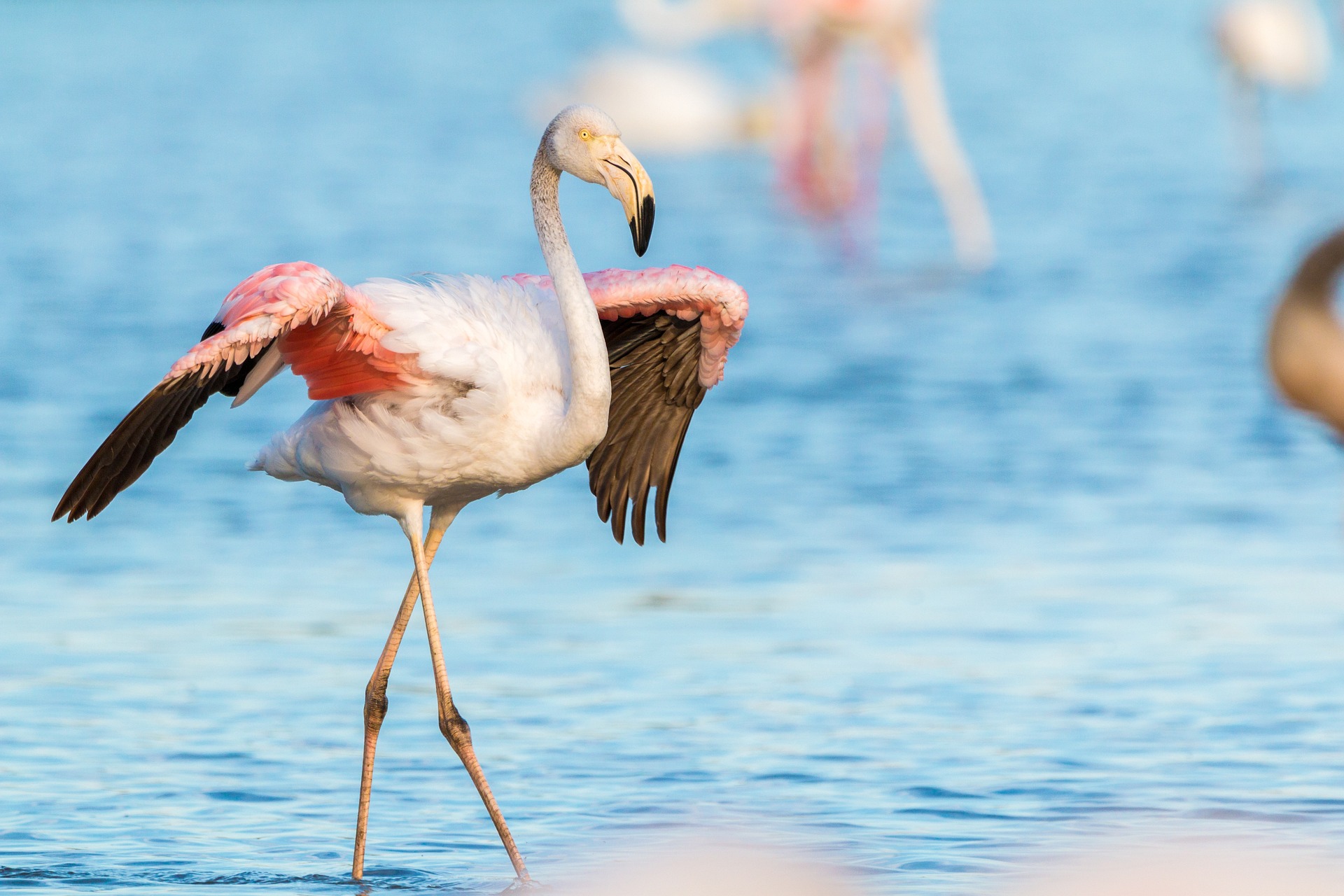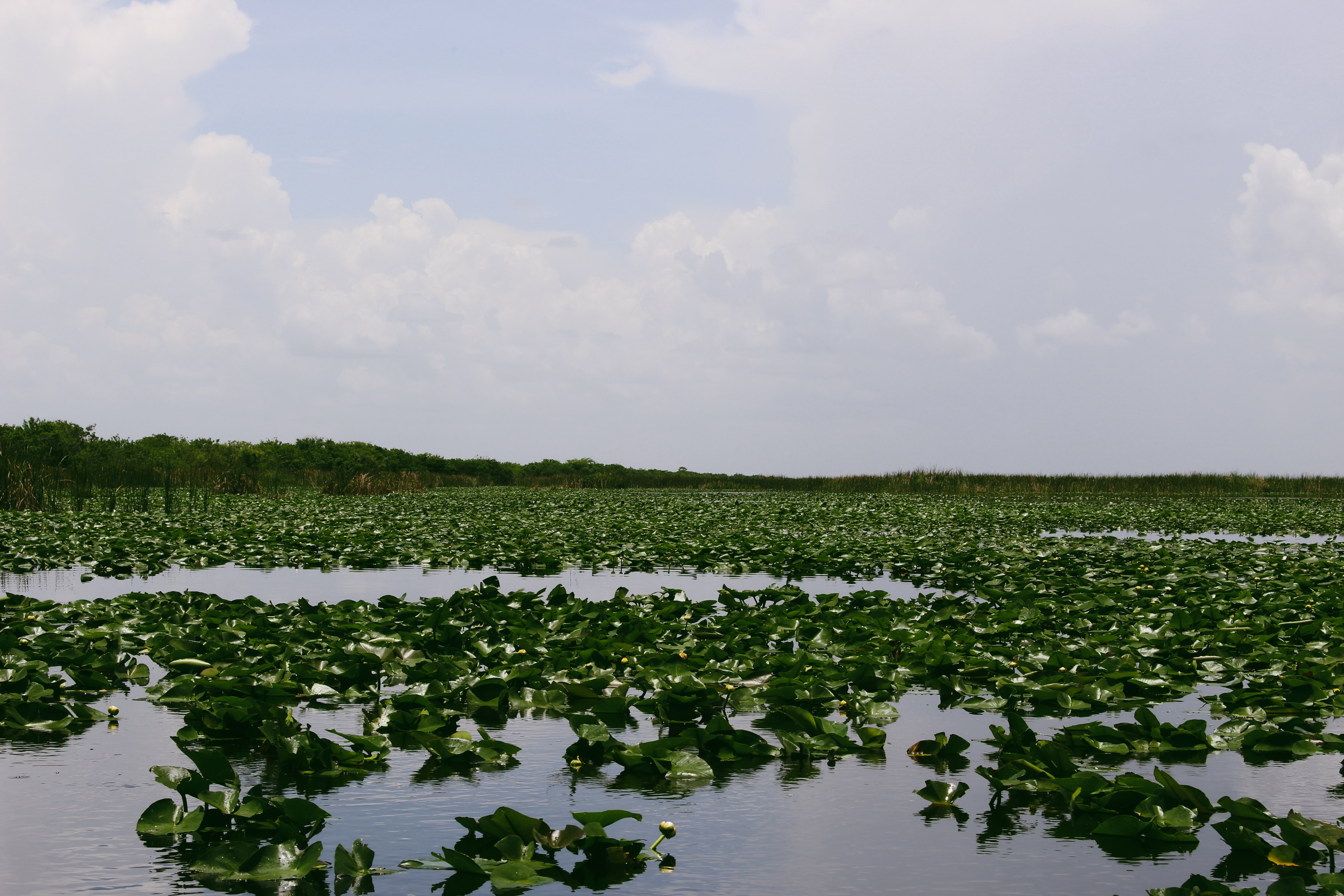Some flamingos find it easier to steal a nest that’s already been
built, so mating pairs must guard a nest from other flamingos as well
as predators. When a flamingo chick hatches, both parents take turns
feeding it: first with a special liquid baby food they produce in
their throats called crop milk, then with regurgitated regular
flamingo food as the chick ages.
Flamingo chicks are born with grey and white feathers. They do not
turn pink for a year or two. Their beaks are straight, and begin to
curve as they grow and mature. A variety of land predators will eat
flamingos and their eggs, but since their nests are built on swampland
or mudflats, the most common predators for flamingos are other birds.
There are six distinct species of flamingo, but it takes a trained eye
to distinguish them. Adult flamingos are four to five feet tall, but
only weigh between four and eight pounds. That’s the kind of
astonishing body density (or lack of) needed for flight. Flamingos
tend to congregate in mudflats or lagoons, where they can find shallow
saltwater prey. These habitats are also difficult for predators to
negotiate.
